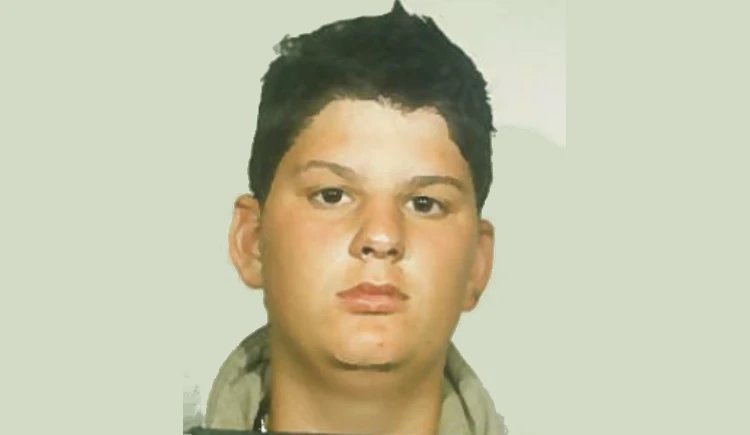Robert Thomas Pillsen-Rahier Disappearance in Colorado Springs Colorado
On July 6, 1990, 15-year-old Robert Thomas Pillsen-Rahier, known as Bobby, vanished from the Cheyenne Mesa Adolescent Treatment Facility in Colorado Springs, Colorado. His disappearance remains one of the most unsettling cases in the region, marked by conflicting reports, unanswered questions, and the desperate search of a mother who never stopped seeking answers. More than 30 years later, Robert’s whereabouts are still unknown, with the case reclassified as “endangered missing.”
Robert’s early life was marked by tragedy, trauma, and struggles that led to his placement in psychiatric facilities. His disappearance not only left his family devastated but also raised concerns about the treatment and safety of adolescents in psychiatric care during the late 20th century. This article explores the details leading up to Robert’s disappearance, the immediate aftermath, and the ongoing search for the truth about what happened on that fateful day.
Early Life and Trauma: The Impact of His Father’s Death
Born in Arizona in October 1974, Robert experienced a significant trauma at a young age. His mother, Jean, married Gerald Rahier, a Vietnam War veteran and paraplegic who became Robert’s father figure. Gerald, despite his disabilities, taught Robert essential life skills, creating a strong bond between them. However, tragedy struck on a moving day in 1982, when Gerald died by suicide. Seven-year-old Robert was the first to discover his stepfather’s body, an event that profoundly affected him.
The impact of witnessing his stepfather’s death led to a noticeable change in Robert’s behavior. He became withdrawn, struggled with emotional issues, and developed learning disabilities. Despite his mother’s efforts to provide support and therapy, Robert’s behavioral challenges worsened, resulting in bullying and incidents at school. These issues eventually led to his placement in special education and, later, psychiatric facilities.
Cheyenne Mesa Adolescent Treatment Facility: A Troubled Stay
Robert was first sent to the Cheyenne Mesa Adolescent Treatment Facility in Colorado Springs after a violent altercation at school in 1989, where he hit another student in response to bullying. Cheyenne Mesa was known for treating teenagers with psychiatric and behavioral problems, and it became the center of Robert’s life for the next year. Though he returned home temporarily, his behavior continued to deteriorate. His mother, Jean, was pressured by authorities to place him in long-term care or risk losing custody.
In late June 1990, Robert was readmitted to Cheyenne Mesa despite his reluctance. The facility was meant to be a place where Robert could receive specialized care and treatment, but it also became the site of his mysterious disappearance. Robert’s time at Cheyenne Mesa was filled with reports of troubling behavior, anxiety, and resistance to the strict environment.
During his last phone call to Jean on July 6, 1990, Robert was distressed and crying. He told his mother that he needed to speak with her urgently, hinting that he was in danger but unable to elaborate due to facility phone monitoring. Despite his hints that he wanted to run away, Jean convinced him to stay and promised to visit soon. It was the last time she ever spoke to her son.
Conflicting Accounts and Missing Details
The events of July 6 remain murky, with conflicting reports from Cheyenne Mesa staff about what happened. According to one employee, Robert was seen lying in a field on the facility grounds around 8:45 AM. Another employee claimed to have witnessed him walking off the property around the same time but did not intervene, citing Robert’s size as a deterrent. Jean later noted that the timing of these sightings overlapped with her phone call to Robert, raising doubts about the accuracy of these accounts.
When Jean tried to visit Robert later that day, she was told he had gone on an off-campus outing. Shortly thereafter, she received a call informing her that Robert had run away. The facility’s explanations of his disappearance were inconsistent, leaving Jean suspicious about what truly happened. Her suspicions were further fueled when Cheyenne Mesa returned Robert’s belongings, including the clothes he was supposedly wearing when he vanished. The two pairs of shoes he had brought to the facility were also returned, despite Robert’s aversion to being barefoot.
Jean believed that Robert may have been trying to disclose something serious during his final phone call. A week earlier, she had found blood in his underwear after a home visit, suggesting the possibility of abuse. Jean speculated that Robert was trying to reveal abuse at Cheyenne Mesa but was too afraid to do so explicitly over the monitored call.
A Mother’s Tireless Search for Answers
In the weeks and months following Robert’s disappearance, Jean relentlessly pursued answers. She called the facility repeatedly, only to be threatened with harassment charges just three days after Robert’s disappearance. Cheyenne Mesa’s response fueled Jean’s suspicions that the facility might be hiding something. Despite her efforts, there was no substantial evidence to determine what truly happened to Robert.
Jean worked tirelessly, distributing flyers, contacting law enforcement, and reaching out to media outlets in hopes of finding her son. The case, however, faced numerous obstacles, including a lack of leads and the closing of Cheyenne Mesa in 1997 due to financial problems. Jean’s search took her across state lines and through countless hours of investigation, but as the years passed, hope dwindled.
Robert’s disappearance was reclassified from “runaway” to “endangered missing” in the years following, indicating a shift in how authorities viewed the case. The change suggested a recognition that Robert may not have simply run away but could have been the victim of foul play or neglect. Despite this reclassification, concrete evidence of Robert’s fate has never been found.
Theories and Speculations Surrounding Robert Pillsen-Rahier’s Disappearance
The mysterious disappearance of 15-year-old Robert Pillsen-Rahier from the Cheyenne Mesa Adolescent Treatment Facility on July 6, 1990, has generated numerous theories and speculations over the years. With conflicting accounts, missing details, and unresolved questions, his case continues to perplex investigators and the public alike. Despite the reclassification of his status to “endangered missing,” the circumstances of Robert’s vanishing remain largely unknown. Here, we explore some of the main theories and speculations that have emerged about what might have happened to Robert.
Did Robert Run Away?
The initial classification of Robert’s case as a “runaway” suggested that authorities believed he had left Cheyenne Mesa voluntarily. There are reasons to consider this theory: Robert had hinted to his mother during their final phone call that he wanted to run away, and he was known to have run away briefly in the past. His distress during the call, along with statements about “monitored phones” and fear for his safety, indicated that he might have felt trapped and desperate to leave the facility.
However, several aspects of the case cast doubt on the runaway theory. First, Robert’s belongings, including the clothes he was allegedly wearing at the time of his disappearance, were returned to his mother. This unusual detail raises questions about whether he could have left the facility fully clothed and prepared for life on the run. Second, Robert was not equipped to survive long on his own. He had sensitive feet and only two pairs of shoes, both of which were returned to Jean. Moreover, his close relationship with his mother suggests that he would have likely tried to contact her if he had managed to escape safely.
While the runaway theory remains plausible, the complete absence of any trace of Robert over three decades challenges its credibility. If he did leave on his own, the question becomes whether he met harm shortly afterward or managed to disappear completely.
Foul Play Within Cheyenne Mesa: Could Staff Be Involved?
One of the most concerning theories involves potential foul play by the staff or residents at Cheyenne Mesa. Jean, Robert’s mother, has long suspected that something sinister occurred within the facility that led to his disappearance. She believes that Robert’s distress during his final call might have been an attempt to reveal abuse or misconduct. Her suspicions are rooted in previous observations, such as finding blood in Robert’s underwear after a home visit, suggesting possible sexual abuse. Robert may have tried to confide in Jean about abuse but was too afraid to do so explicitly over the monitored phone line.
The conflicting accounts from Cheyenne Mesa staff on the morning of Robert’s disappearance add to the speculation. One staff member claimed to have seen Robert lying in a field on the facility’s grounds, while another claimed to have seen him leaving. Both sightings occurred during the time Jean was on the phone with Robert, making them highly suspicious. The fact that one staff member chose not to stop Robert, citing his size, also raises questions about whether staff acted negligently or were potentially complicit in his disappearance.
Moreover, Cheyenne Mesa’s rapid shift in responsibility, threatening to file harassment charges against Jean only three days after Robert vanished, further supports theories of internal foul play or neglect. While there is no hard evidence linking staff directly to Robert’s disappearance, the facility’s response and the conditions within it have fueled speculation that Robert may have been harmed by someone inside Cheyenne Mesa.
Was Robert Abducted After Leaving Cheyenne Mesa?
Another theory speculates that Robert might have successfully left Cheyenne Mesa but was abducted or met with foul play shortly afterward. Colorado Springs had its share of crime in the 1990s, and an unaccompanied 15-year-old boy could have easily fallen prey to predators. If Robert managed to leave the facility grounds, he would have been highly vulnerable, especially without adequate footwear or knowledge of the surrounding area.
There is also the possibility that Robert may have encountered someone who offered him assistance but had malicious intentions. Since there were no confirmed sightings of Robert outside Cheyenne Mesa, it is difficult to establish whether he left voluntarily or was coerced into leaving by someone he encountered.
Without evidence, this theory remains speculative, but it aligns with the total absence of leads or sightings since Robert’s disappearance. The lack of a body, belongings, or even credible tips suggests that something could have happened to Robert soon after he left the facility’s grounds.
A Potential Cover-Up: Was There a Broader Conspiracy?
The theory of a cover-up, either by Cheyenne Mesa or other involved entities, has been floated by some who closely follow Robert’s case. This speculation stems from the facility’s inconsistent accounts, the hurried closure of responsibility, and the fact that Cheyenne Mesa shut down due to financial insolvency only a few years after Robert’s disappearance. Critics of the facility have suggested that it may have been under pressure to hide potential abuses or misconduct, leading to a potential cover-up of Robert’s fate.
While it is a more dramatic theory, the possibility of a cover-up is not entirely far-fetched, given the facility’s reluctance to cooperate with Jean’s inquiries and the broader context of poorly regulated psychiatric treatment facilities during the 1980s and 1990s. If Cheyenne Mesa’s staff had reason to fear legal or reputational consequences, it could explain the inconsistent reports and the staff’s dismissive behavior toward Jean.
Could Robert Have Taken His Own Life?
Although heartbreaking to consider, the theory that Robert may have taken his own life cannot be completely ruled out. Robert had struggled with mental health issues and expressed guilt over his stepfather’s suicide when he was younger. It’s possible that the distress he felt on the morning of his disappearance reflected a deeper emotional crisis. However, there is no physical evidence supporting this theory—no body, belongings, or clear indications of self-harm.
The fact that Robert’s disappearance was later reclassified as “endangered missing” suggests that authorities now suspect foul play over a runaway situation or suicide. Nevertheless, without concrete evidence, the possibility of self-harm remains among the speculations.
The Unsolved Mystery of Robert’s Fate
The theories and speculations surrounding the disappearance of Robert Pillsen-Rahier reflect the deep uncertainty and tragedy of the case. Whether Robert ran away, fell victim to foul play, or was subjected to a broader cover-up, the truth remains elusive. Despite the efforts of his mother, the reclassification of the case, and the passing of time, Robert’s fate continues to be one of Colorado’s most troubling mysteries.
Ultimately, Robert’s disappearance highlights the vulnerabilities of at-risk youth in institutional settings, the need for accountability in treatment facilities, and the painful uncertainty faced by families of missing persons. The hope for answers persists, driven by advancements in cold case investigations and the dedication of those still seeking justice for Robert.
Jean’s Legacy of Hope
Jean Rahier-Langness, Robert’s mother, never stopped searching for her son, despite the overwhelming challenges. She moved to Kansas with Robert’s younger brother, Gerald Jr., but continued to actively investigate Robert’s disappearance for years. Her search extended across different states, public appeals, and media outreach. Even with no new leads, Jean remained hopeful for many years, driven by a mother’s love and the need for closure.
As of today, Robert’s disappearance remains unsolved. If alive, he would be 46 years old, with a small scar on his forehead and burn marks on his right arm and hand from childhood accidents. Jean continues to remember him as the joyful child he once was before trauma and institutionalization changed his life. Her lingering hope is that Robert’s case will one day be resolved, bringing closure to a painful chapter that began over three decades ago.
FAQs
What happened to Robert Pillsen-Rahier?
- Robert vanished from the Cheyenne Mesa Adolescent Treatment Facility on July 6, 1990, and has not been seen or heard from since.
What was Robert’s last known communication?
- Robert called his mother that morning, expressing distress and hinting at issues he couldn’t openly discuss due to monitored phones.
Why did Jean suspect foul play at the facility?
- Jean found inconsistencies in the facility’s accounts, as well as the return of clothes Robert was allegedly wearing when he vanished.
Is there any evidence of abuse at the facility?
- Jean believes that Robert’s final call and previous signs of possible sexual abuse suggest misconduct, but there’s no verified evidence.
What is the current status of Robert’s case?
- Robert’s case is classified as “endangered missing,” indicating that authorities believe he could be at risk of harm or foul play.
How can the public help?
- Anyone with information is encouraged to contact the Colorado Bureau of Investigation or the National Center for Missing and Exploited Children.
Conclusion
The disappearance of Robert Pillsen-Rahier remains one of Colorado’s most troubling mysteries. Despite decades of searching, advocacy, and technological advancements in missing person cases, Robert’s fate remains unknown. His mother, Jean, continues to hope for answers, driven by a persistent love and the desire for justice. The case serves as a reminder of the complexities surrounding missing children, especially those under institutional care, and the need for vigilance and transparency.
If you have any information about the disappearance of Robert Pillsen-Rahier, please contact the Colorado Bureau of Investigation at 303-239-4211 or submit a tip online at CBI Online Tip Submission. You can also reach out to the National Center for Missing and Exploited Children at 1-800-THE-LOST (1-800-843-5678) or submit tips through NCMEC’s website. Additionally, the El Paso County Sheriff’s Office in Colorado Springs can be reached at 719-520-7100. All information provided will be kept confidential, as even the smallest detail could be vital to resolving this case.
Discover more from City Towner
Subscribe to get the latest posts sent to your email.




